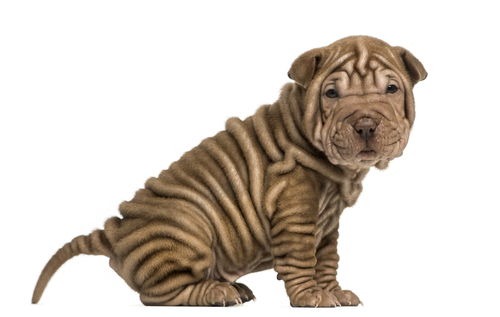
We ask the question from a physiological standpoint.
Initially, scientists (named in the next paragraph) wanted to study the Chinese Shar-Pei specifically because of a rare mutation in humans that also results in excessive wrinkling.
Research led by Joshua Akeu and his University of Washington/Seattle colleagues started out with three hundred dogs of ten breeds that included the Shar-Pei, Poodle, and Jack Russell Terrier. They looked at traits and corresponding genes. They found 155 distinct genetic regions, including five genes previously linked to differences between breeds.
While they were looking, they found genes that influenced size and coat color, but also differences in a gene that lead to the wrinkles of the Shar-Pei. How they made this identification was to compare the genes of thirty-two highly wrinkled Shar-Pei with eighteen Shar-Pei with smooth skin.
They found that the gene, HAS2, makes hyaluronic acid synthase (sound familiar, people on a skin regime?) that’s important in the production of skin tissue. Scientists surmised a very long time ago, probably in China, a mutation arose in the gene that led to a wrinkly puppy and the trait was selectively bred.
Inasmuch as this post is about the Shar-Pei, it is also about the importance of purebred dogs in researching human ailments. Most genetic diseases found in dogs are comparable in certain respects to similar diseases in humans (with cancer being perhaps one of the most important). Most of our dogs’ 19,000 genes have “homologous genes” in other mammals, and most of the genes on, for example, canine chromosome 34, are homologues for a sequence of genes found on the human chromosome 3. When something is discovered about what a dog gene does or doesn’t do, or how it does or doesn’t do it, that discovery may shed light on how the homologous gene is working in people. The discrete populations of our different breeds give scientists the chance to compare and contrast the genetics of the different groups which make it easier to find the causes of specific traits in humans, and these days, most of the time all that is needed from a dog is a cheek swab.
